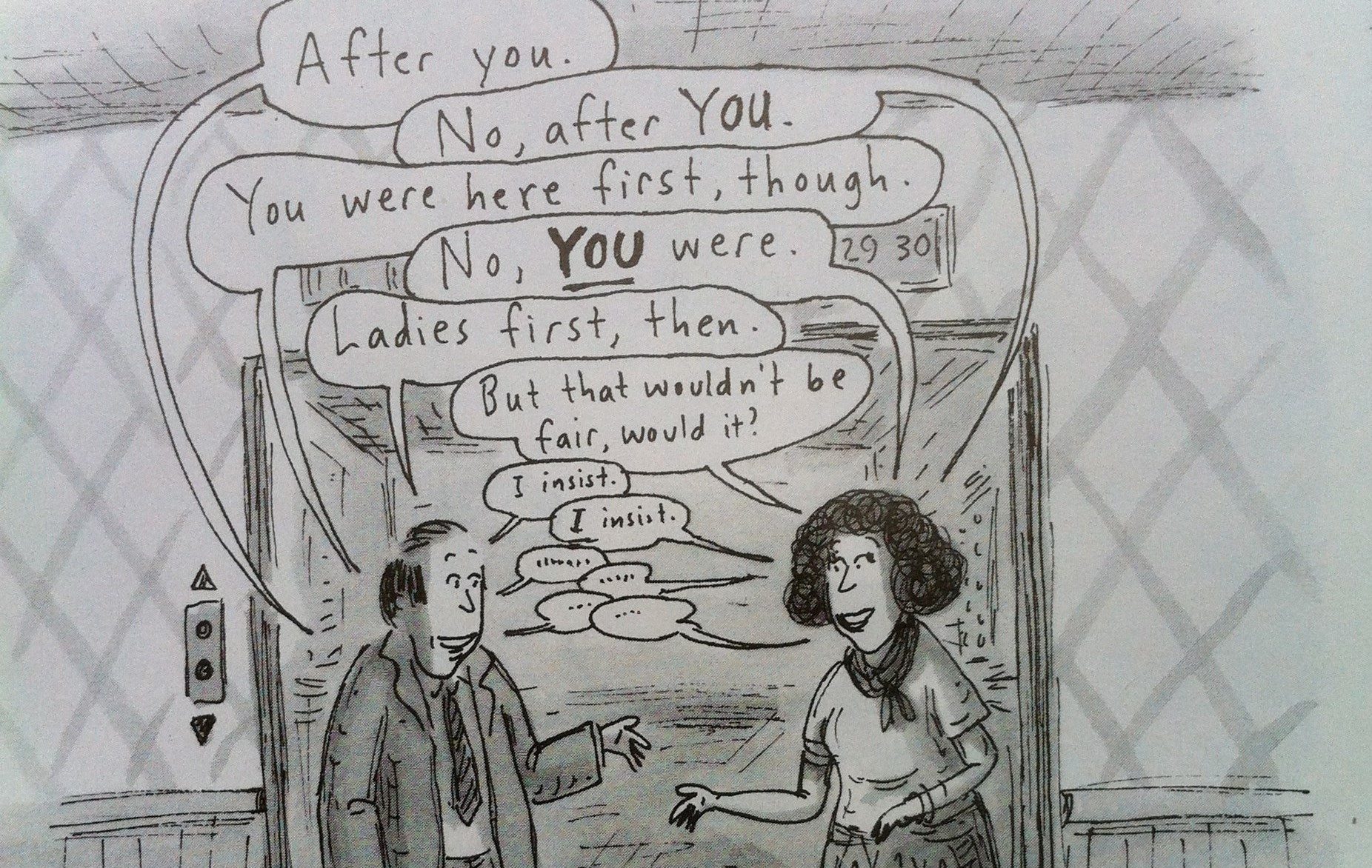
by questful | Mar 4, 2025 | Emotional, Parenting, Uncategorized
In one of my favorite books, The Four Agreements, Don Miguel Ruiz shares what is essentially his code of conduct for living a fulfilling and meaningful life. In the book, Ruiz describes four agreements he suggests people use as a personal code of conduct, guiding both how we think about ourselves and act toward others.
The four agreements he outlines are:
1. Be impeccable with your word – speak with integrity.
2. Don’t take anything personally – nothing others do is because of you.
3. Don’t make assumptions – find the courage to ask questions and share what you really want.
4. Always do your best – this will change from moment to moment; for example, it will be different when you are healthy or sick.
I find these agreements are useful reminders anytime, but especially during a transition like divorce when we are often looking for answers and asking why or how something happened. Specifically, it’s easy to look for someone to blame, or go down the painful path of, “if I had only…” or “if my spouse did or didn’t do something…” Those questions can offer insights if you are looking to learn from the experience as you move forward, but they can also keep us stuck in a negative thought pattern.
I love each of Ruiz’s agreements, but for this blog I’m focusing on the danger of making assumptions.
Oftentimes we don’t realize what assumptions we bring to a situation, so it’s a great first step to recognize that your assumptions may be a factor in how you’re navigating this time.
Here are a few examples:
- Do you assume that once you share your story with the judge or your lawyer that they’ll hear you, sympathize, and make things “right?” This can be a costly mistake for many reasons: emotionally, as it is rarely accurate, and financially, too because going to court is always more expensive than coming to an agreement.
- Divorce is fair. Unfortunately, “fairness” is a subjective term that is difficult to measure. Something what feels fair to you may seem completely lopsided to someone else. Instead of judging the outcome by an elusive standard like fairness, work with your team to set specific goals that meet your needs.
- Your ex / spouse feels a certain way. For example, I have a client who is post-decree and still dealing with many coparenting challenges, including scheduling, decision-making, cost-sharing, and an approach to discipline and therapy. My client feels strongly that her ex doesn’t care as much as she does about being a good parent. But what if he just doesn’t see these issues the same way she does? Lately we have been talking about her assumption that he is picking fights in order to make her life difficult and with malice. And maybe that’s true. But what if it isn’t? What if he felt controlled in the marriage and is working on standing up for himself? What if he also believes in the fairness of his argument? What if their dynamic is preventing either of them from seeing that they both want what’s best for the kids?
In this situation my client has found some comfort in trying to believe that her ex does want what’s best for the kids. It’s allowed her to pause before automatically assuming that what he suggests is wrong and harmful.
Could you have a more productive discussion with your ex (and possibly come to resolution sooner) if you were willing to look at what assumptions you bring to the process?
It’s a Two-way Street
When I talk with clients about this they often respond with: I’ll do it but then he/she should, too.
Yes. They should. But we all know that doesn’t mean much. If you could control your ex’s behavior, would we be talking about divorce? No one can make you or your ex do anything, including evaluate your assumptions. Accepting that, and doing what is best for you, because it is best for you and not for any other reason, is where transformation happens.
Another quote from The Four Agreements is this: “If someone is not treating you with love and respect, it is a gift if they walk away from you. If that person doesn’t walk away, you will surely endure many years of suffering with him or her. Walking away may hurt for a while, but your heart will eventually heal. Then you can choose what you really want. You will find that you don’t need to trust others as much as you need to trust yourself to make the right choices.”
Are you willing to take the brave and vulnerable step of checking your assumptions during this process? It may be scary, but it’s also empowering.
Ask yourself what scares you about it. Is there one action you can take today that will help you build your confidence, so you can take another one tomorrow?
I know you’ve done hard things before, and you can do this, too. You’re worth the effort.


Andra S. Davidson
Founder, Certified Divorce Coach, Mediator
Phone: (720) 804-0133
andra@betterthanbeforedivorce.com
www.betterthanbeforedivorce.com

by questful | Apr 13, 2024 | Emotional, Parenting, Uncategorized
If you are anywhere in the divorce process you’ve probably had someone on your team encourage you to show up as your “best self” as often as possible during the process. And while that sounds good, most people don’t know what it means or how to do that.
I define a Best Self Divorce this way:
- One in which you commit to taking the high road,
- Engaging your strengths and values,
- Being kind to yourself and others,
- Owning and forgiving yourself for your mistakes,
- Celebrating your successes, and
- Moving unapologetically toward the wholehearted future you deserve.
Common objections to this approach include:
- My ex isn’t taking the high road, so why should I?
- It’s too much work.
- My kids should see who their (other parent) really is.
While these issues are understandable, they don’t change the valuable impact of you working to be your best self during divorce.
Here’s why:
First, while you may be correct that your ex isn’t behaving well, you aren’t doing it for them, it’s for you. When you choose the high road, several positive things tend to occur. First, your ex often follows your lead! You feel better about your own choices, and who you are; you move forward, toward the future instead of staying stuck; and you model the kind of behavior you want your kids to emulate.
This also addresses the second objection: “It’s too much work.” In my experience, this isn’t true – it’s more work to stay low. Why? Because it may seem easy now, but you’ll probably end up having to go back and try to undo the impact of the choices you regret. Whether it’s apologizing to people that were upset, spending time trying to fix problems that resulted from poor decisions, or just the stress that regret and angst causes you – the toll of going low is real.
Importantly, kids don’t need you to point out who their other parent “really” is. If your spouse/ex is going to blow it, let them do it themselves. The best thing you can do is create a safe space for your kids and encourage a healthy relationship with both parents. Study after study shows that hearing negative comments about a parent makes kids feel guilt, feel like they must choose sides, and can lead to self-esteem issues, self-blaming and more, depending on a child’s age and individual situation. On the other hand, when you encourage a healthy relationship with the other parent, take the high road and show flexibility, it will pay off for years. Your kids notice those choices, too, and you reinforce that you are safe and trustworthy. They don’t have to take care of you, worried you’ll fall apart if they mention the other parent. They can share their stress and worries with you and ask for support, knowing you have perspective. Again, you may be correct – the other parent may blow it with your kids but let them be the one to make the mistakes. Saying I told you so is tempting but ultimately empty when it’s your child’s well-being that suffers.
Think of showing up as your best self during divorce as a gift you give yourself. No one can make you say something or force you to respond in a certain way. Give yourself the opportunity to move toward your future with intention, and it will ripple into all aspects of your life.


Andra S. Davidson
Founder, Certified Divorce Coach, Mediator
Phone: (720) 804-0133
andra@betterthanbeforedivorce.com
www.betterthanbeforedivorce.com

by questful | Sep 25, 2019 | Collaborative Law, Emotional, Uncategorized
In our day-to-day lives, we encounter all types of personalities. Some are much easier to deal with than others. And too often, we don’t get to choose the players in our divorce cases, so we must learn how to work with others in an effective, respectful manner in order to get things done.
The key is to develop an array of communication skills so that we’re prepared for the different people, personality styles, and situations that come our way. Teams depend on quick communications internally with colleagues as well as externally with clients in a variety of different mediums: phone calls, email, texts, meetings, etc.
In a perfect world, every communication exchange is efficient and to the point. Divorce cases are made up of diverse people with different temperaments—from those who are calm, cool and collected to High-Conflict People (HCP)—all of whom have varying levels of communication skills and motives. Toss in a couple disruptive people, whether they are clients or colleagues, and the probability of depleting productivity and morale is high.
Most every divorcing couple is in conflict, by definition. And many of them are high-conflict individuals by nature which only exacerbates the situation.
Do these examples sound familiar?
- Perhaps you dread reading the daily complaints in your inbox from your soon-to-be ex-spouse?
- Have you ever received an irate email from a client, blaming you for their dissatisfaction and threatening to sue?
- Do those written reviews from your High-Conflict clients just make you want to quit?
- Having trouble collaborating on a divorce case with that certain person who never seems to actually work, and blames others for not getting things done?
- Maybe you have a client who sends you countless antagonistic emails and consumes far more time than you can give to any one client.
- Are you irritated with Karen and Bob’s never-ending series of aggressive emails to each other, all of which get copied to you?
These are just a few of the situations where you might find a High-Conflict Person or be an HCP’s target of blame. Chances are it’s happened before and it will happen again. Do you and your teammates know how to respond?
BIFF Responses, from a valuable book by Bill Eddy entitled Biff: Quick Responses to High Conflict People, Their Personal Attacks, Hostile Email and Social Media Meltdowns, are specifically designed to help you address written hostilities, but this technique can also be used in person-to-person verbal confrontations.
BIFF stands for Brief, Informative, Friendly, and Firm. It’s a simple response technique that’s quick and effective in dealing with today’s High-Conflict communications. I’ve used BIFF responses with great success in both my personal and professional lives, but they take practice!
BRIEF
Responses should be very short: one paragraph of 2-5 sentences in most cases. The point is to avoid triggering HCP defensiveness in the other person and focusing them on problem-solving information. The more you say, the more likely you are to trigger another negative response.
INFORMATIVE
Provide a sentence or two of straight, useful information in neutral terms on the subject being discussed. Shift the discussion to an objective subject rather than opinions about one another.
FRIENDLY
You can start out by saying something like: “Thank you for telling me your opinion on this subject.” Or: “I appreciate your concerns.” Or: “Thanks for your email. Let me give you some information you may not have…”
FIRM
The goal of many BIFF responses is to end the conversation—to disengage from a potentially high-conflict situation. You want to let the other person know that this is really all you are going to say on the subject. In some cases, you will give two clear choices for future action. If you need a response, then it often helps to set a firm reply date. If you are going to take action if the other person does not do something, then you could say, for example: “If I don’t receive the information I need by such and such date, then I will have to do such and such. I really hope that won’t be necessary.” (Note this is both firm and friendly)
What’s the Goal?
There are usually three goals to consider with HCPs:
- To manage the relationship, such as when you work with the person, when this person is your child, or is a spouse with whom you’re negotiating a settlement, etc. In other words, when the relationship is important to you OR you have no way to get out of it.
- To reduce the relationship to a less intense level, such as with a friend, neighbor, or even a family member.
- To end the relationship, usually by phasing the person slowly out of your life.
How you respond makes a big difference to the HCP. If you give him negative feedback, you will increase the intensity of his interactions with you, as HCPs can’t handle negative feedback. It’s better to use BIFFs and avoid talking about the past as well as putting the emphasis on the desired future behavior.
I’ve used the BIFF technique in countless situations: defusing team disagreements, getting business partners (and married couples) unstuck from their defensiveness and deal breakers, keeping mediation and negotiation sessions on track and moving forward, breaking up family arguments that no one thought could ever be resolved, etc. These tools will help prevent defensiveness, defuse arguments and create connections with teammates as well as family and friends. Truly a must-have for your skills toolbox!

Deb Daufeldt, MA, MBA, LPC, NCC, PMP
Office Phone: (303) 662-1888
Mobile Phone: (303) 638-5295
deb@newchaptersolutions.com
www.newchaptersolutions.com

by questful | Aug 16, 2019 | Emotional, Uncategorized
As most of us were growing up and being socialized, we were taught the skills to get along with others. Barring personality disorders, mental illness or other major impediments there is little that holds us back from the exercise of those fundamental skills which we commonly refer to as manners or common courtesies. We use them in our everyday interactions with strangers we meet in passing: we hold the door on an elevator, we smile and say hello, we ask an older person if they need help, or we let someone with only a couple of grocery items go ahead of us. These are the common courtesies that we casually extend to strangers. We feel good about ourselves when we extend kindness to others.
Following or leading up to divorce or separation, the common courtesies may disappear. Relationships may be fraught with conflict and anger and most people are not at their best. Relationships with the ones we have divorced or separated from become strained and lack the simple common courtesies that we extend even to strangers. To build a more positive future, a return to those courtesies is needed. There seems to be an even greater need for them with the people we are or were closer to than there is with strangers.
These are the people we have shared a deep and intimate bond with. Usually there is an ongoing relationship because there are still children to be raised together. While it may be easier to give a stranger the courtesies we think of as common because we don’t have the anger and history we have with an “ex” the truth is that we also don’t have the intimacy and shared family bonds. Finding the ability to give to that person the same treatment that you give regularly to strangers should not be so difficult when you consider the reward to yourself and to your children. Ask yourself – what prevents you from extending those courtesies to the other person? Are you extending those courtesies to your children? Think about it. Think about the example to set for your children. Examine your motives. Then make the effort and commitment.
This simple, but admittedly difficult, change in perspective to extend social kindness and respect may bring surprising changes to our lives and those of our children. Modeling behavior for our children is a basic parenting skill. More importantly, it brings more civility to your own life and to those around you.

David S. Rolfe
Attorney/Mediator
David S. Rolfe, L.L.C.
Off: 303-841-1181
by questful | Apr 25, 2019 | Emotional, Financial
Click here to read article from Harvard Business Review.







